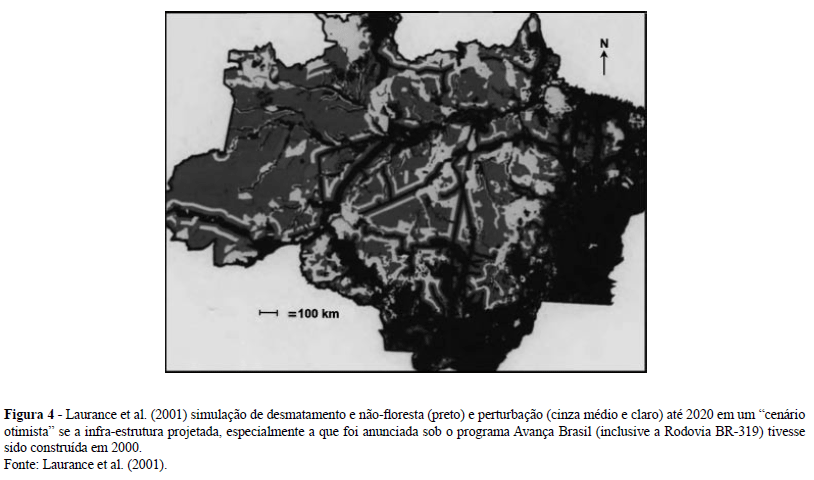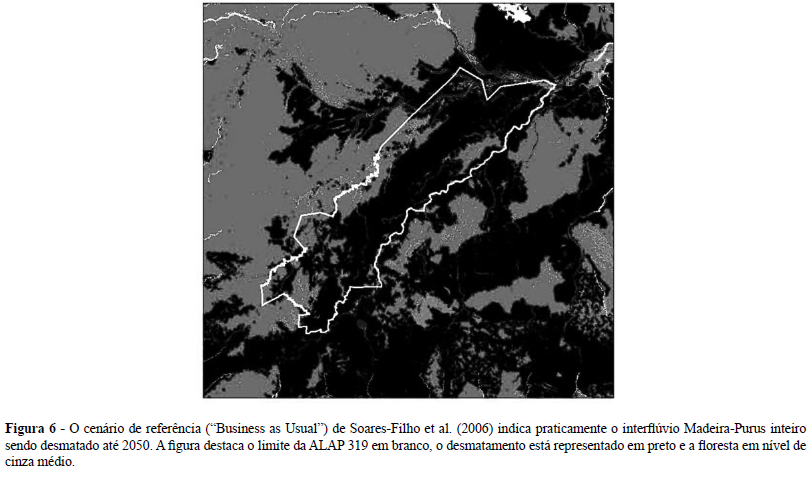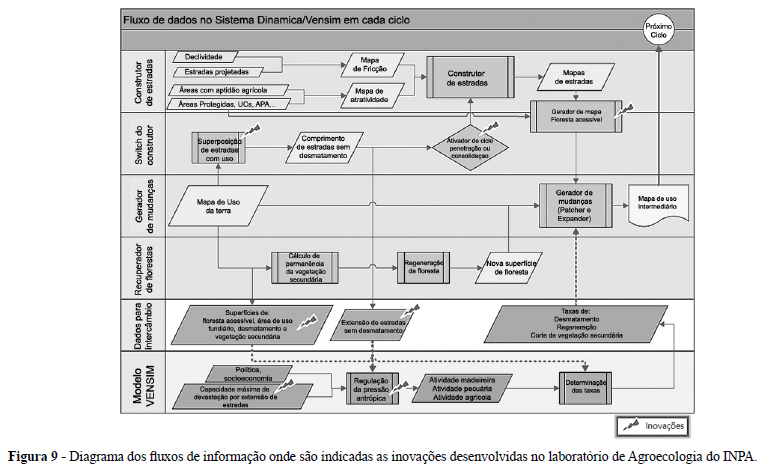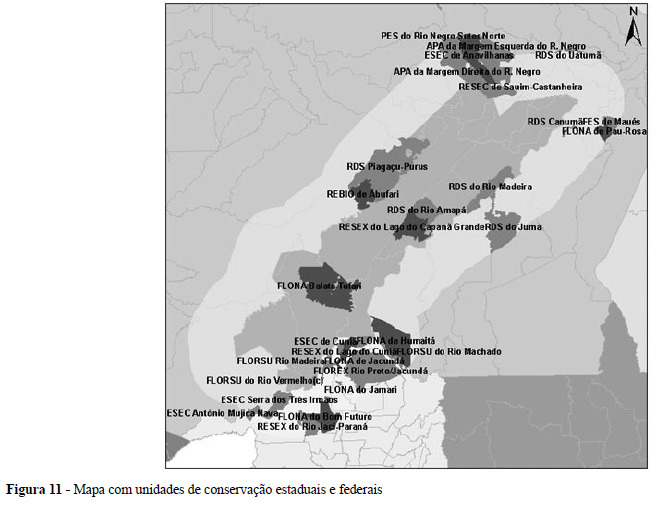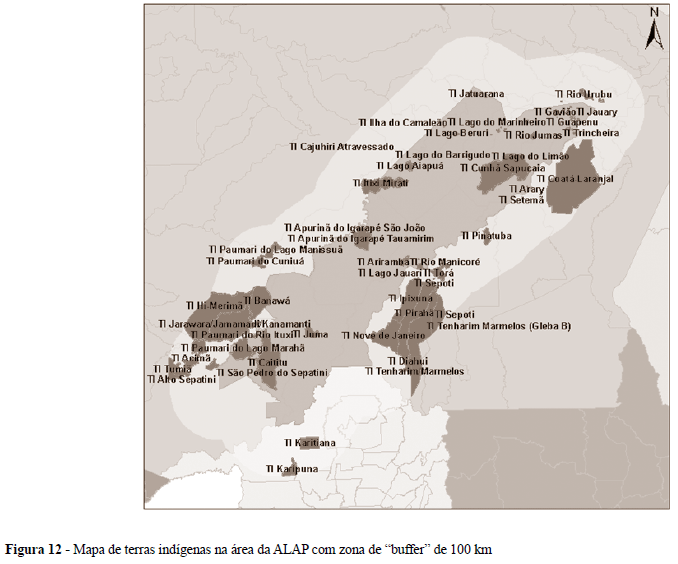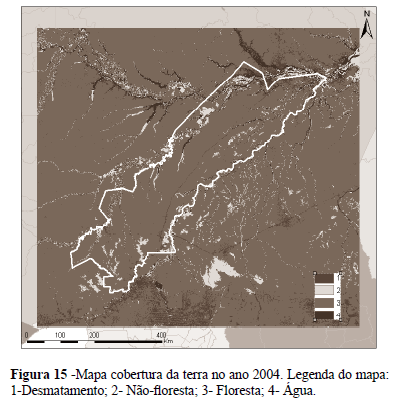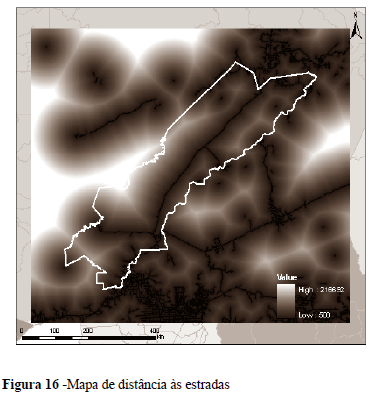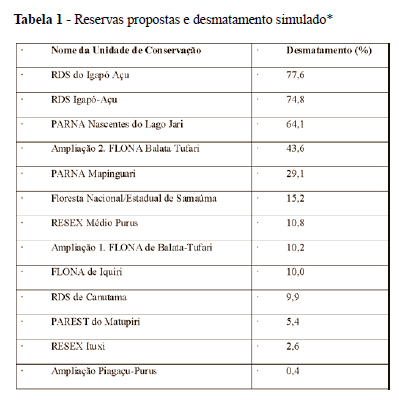A simulation of deforestation and greenhouse-gas emissions over the 2007-2050 period was performed for theArea of ProvisionalAdministrative Limitation (ALAP) along the BR-319 (Manaus-Porto Velho) Highway route, the 153,995-km² area that represents approximately 10% of the state of Amazonas. The federal Ministry of Transportation has announced its intention of reconstructing and paving the BR-319 Highway, which has been abandoned since 1988. The Amazonas state government's State Secretariat for the Environment and Sustainable Development (SDS) and the federal government's Ministry of Environment (MMA) have plans for creating a series of protected areas within the ALAP. Our simulation compares scenarios with and without the proposed reserves. The highway reconstruction and paving is assumed to be complete by 2011, and associated side roads are opened at specified dates over the 2014-2024 period. The deforestation simulation couples the DINAMICA and Vensim software packages and incorporates a series of innovations to allow the deforestation total to respond to improved road access based on parameterization of the relation between deforestation and the expansion of an access road network observed in satellite imagery of an area in northwest Rondônia that is adjacent to the ALAP. The modeled expansion of endogenous roads is not limited by the assumption of a purely "demand driven" deforestation process. This assumption has prevented other models of Amazonian deforestation from representing the effect on total deforestation caused by decisions regarding reserves because an externally specified deforestation total based on demand implies 100% "leakage" of any reserve benefits. The same limitation applies to the effect of roads in demand-driven models. Some validation of our overall deforestation results is provided by simulation of deforestation in Santo Antônio do Matupi, which is located adjacent to the ALAP in southern Amazonas. Florest biomass in theALAP was estimated based on 306 one-hectare plots from the RADAMBRASIL surveys in 13 identified forest types and incorporates a series of recent improvements in estimation methodology. Emissions estimates include additions for the effect of trace-gas releases from burning and decomposition and deductions for carbon sequestered in regrowth in the equilibrium landscape that replaces forest. Emissions estimates are restricted to biomass (soil carbon is excluded). In a "businessas-usual" scenario for the ALAP with only the reserves that already existed in 2007, the simulation indicates 5.1 million ha deforested by 2050 (33% of the ALAP), with a consequent release of 0.95 billion tons (gigatons = Gt) of CO2-equivalent carbon. In a "conservation scenario" with both existing and proposed reserves, deforestation reaches 3.4 million ha by 2050 (22% of theALAP), releasing 0.64 Gt of CO2-equivalent carbon. The effect of the proposed reserves is a reduction of deforestation by 1.6 million ha and of greenhouse-gas emissions by 0.31 Gt of CO2-equivalent carbon. As an illustration of the potential scale of the value of this reduction, if carbon were valued at US$10/ton this reduction in emissions would be worth US$3.1 billion. As in any simulation, these results depend on a series of assumptions regarding deforestation behavior, in this case largely influenced by the small-farmer areas in which our model was calibrated. Future improvements to better represent the roles of large actors, both legal and illegal, may well result in more rapid clearing of unprotected areas.
Amazonia; Carbon; Conservation Units; Global Warming




